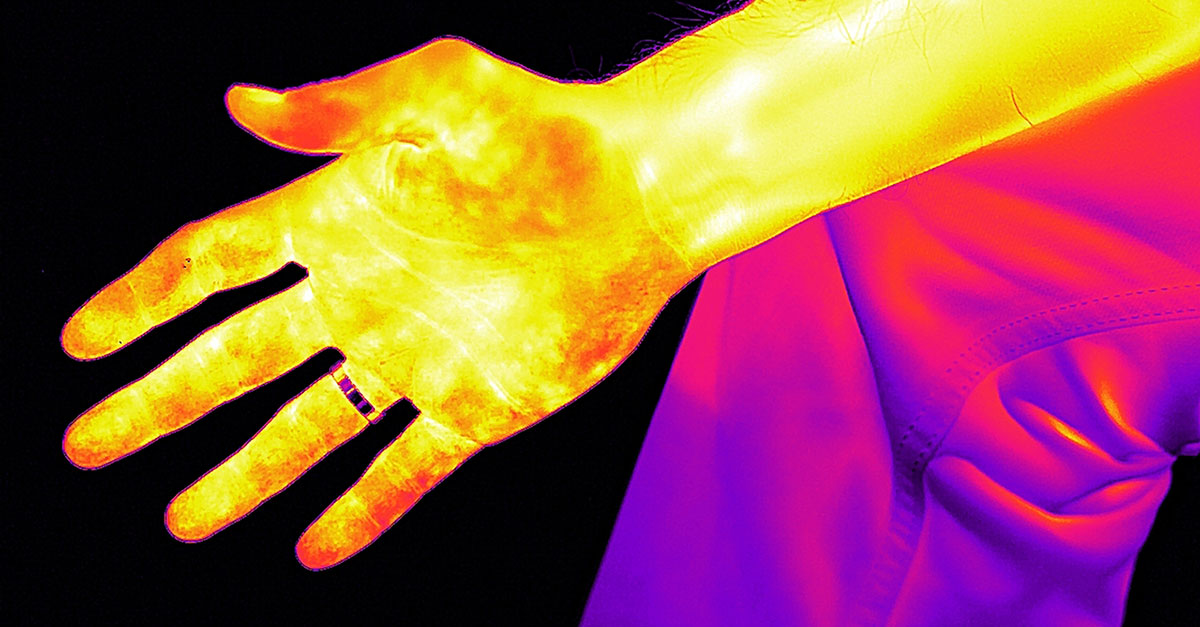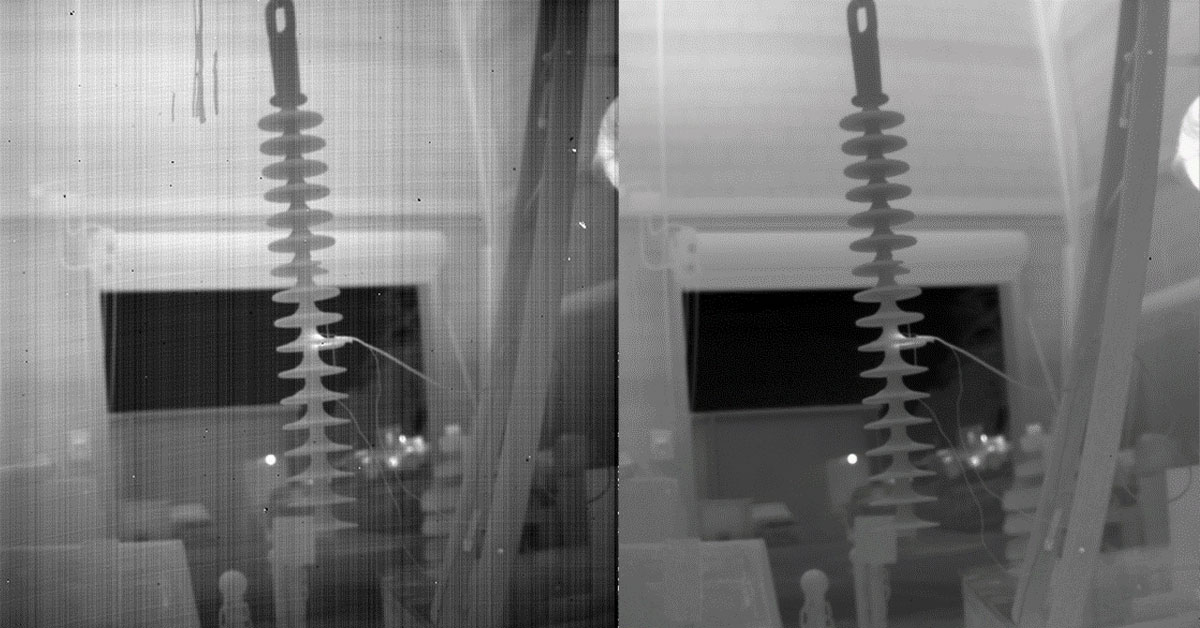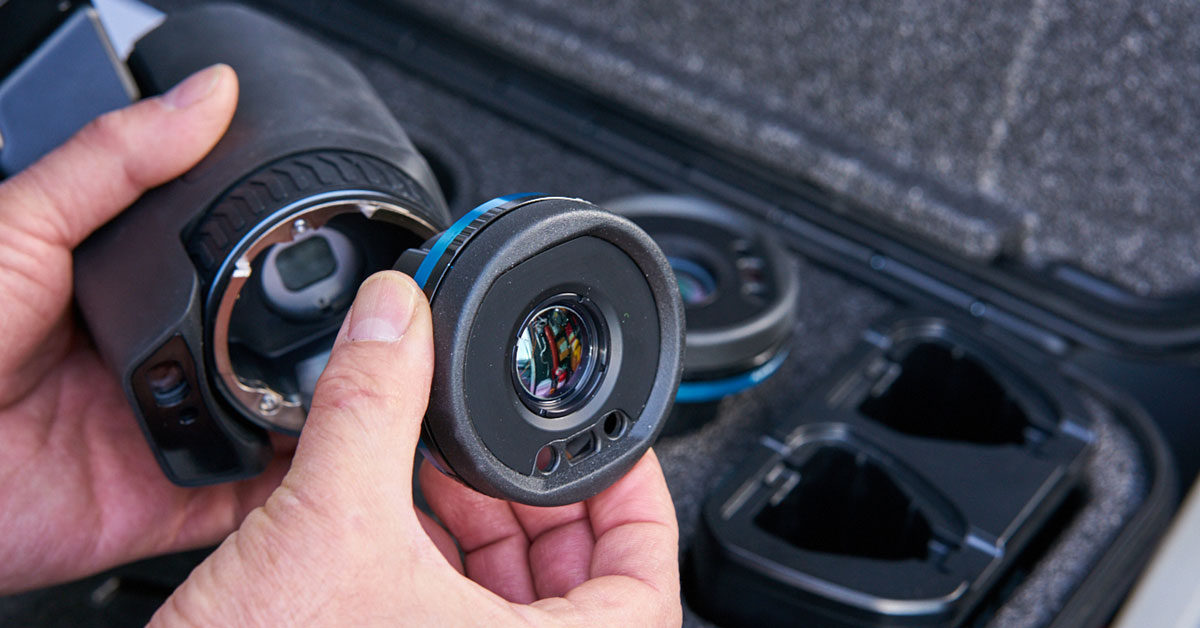Understanding Distance:Size Ratio
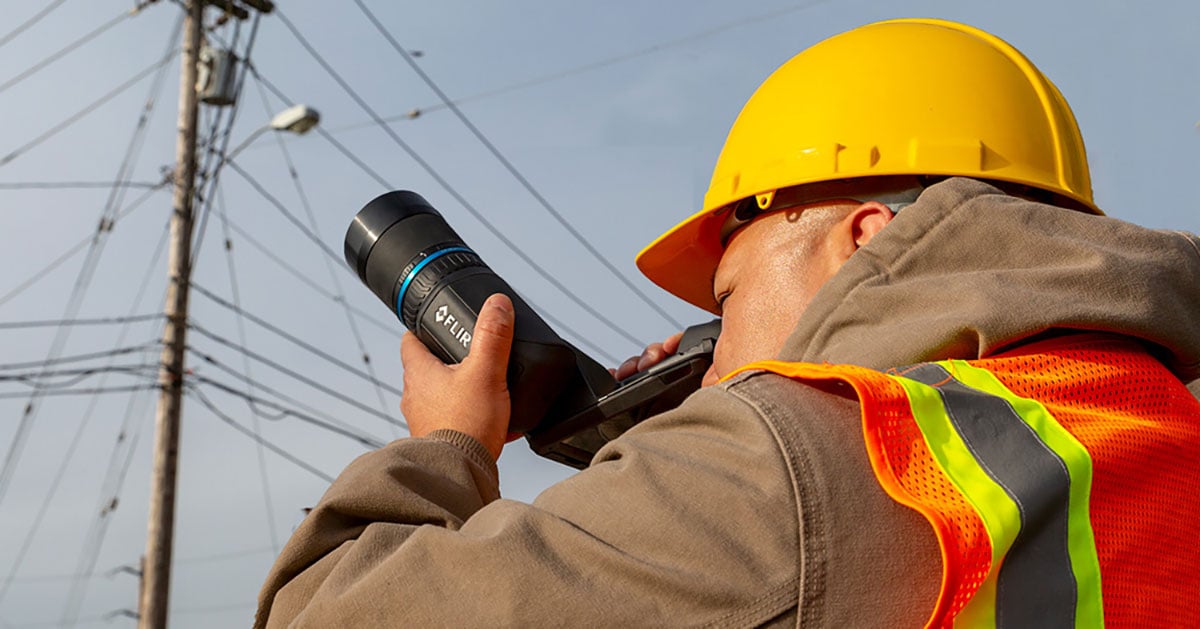
Just how far away can you be from an object and still get an accurate temperature measurement using a thermal camera? The answer depends on several factors, but the key thing to remember is that just because you can view something with a thermal camera does not necessarily mean you’re close enough to get an accurate measurement.
You can compare this to a visual exam at the doctor’s office. When you look at the eye chart from the exam room chair, you may be able to see that there are letters on the smallest line – but at what distance can you still read the letters, i.e. “measure” them accurately?
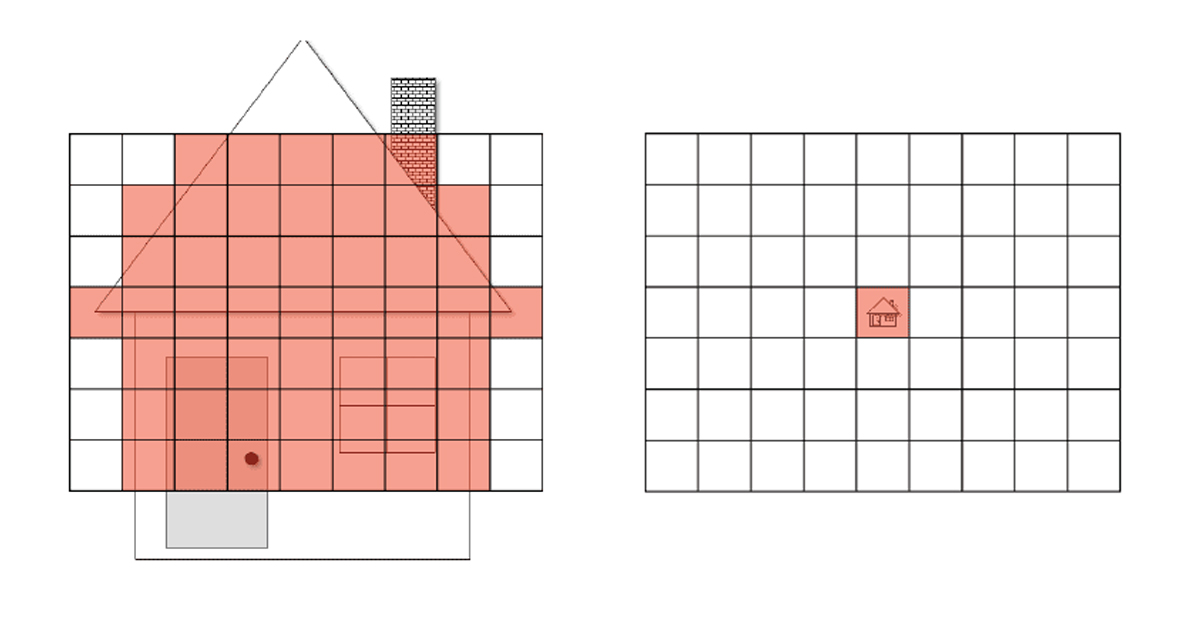
As you move farther and farther away from the object you want to measure, you lose the ability to measure temperature accurately.
To determine how far away you can measure, you need to know the spot size ratio (SSR) of your camera. Also known as the Distance:Size ratio (D:S ratio), this ratio tells you how far you can be (Distance) from a target of a given size (Size) and still get an accurate temperature measurement.
The formula for SSR is:
SSR = Distance / Spot Size
A thermal camera with an SSR of 36:1 could measure an object as small as 1 foot at 36 feet away, or 1 meter at 36 meters away, or 4 meters at 144 meters away. What matters is that the ratio of distance to size remains constant.
Calculating Spot Size Ratio
Let’s say you’re looking to get an accurate temperature measurement of a one-inch target from 120 inches away with a FLIR E8. How do you determine if your camera can do this—in other words, how do you figure out if your camera has a SSR larger than 120:1?
First, you’ll need to find what’s called the Instantaneous Field of View (IFOV) of your camera.
Quick terminology lesson: Field of View (FOV) is basically everything you see on your camera screen, while the IFOV is an angular projection of just one pixel. The area each pixel can see depends on your target distance: the closer you get to a target, the less area each pixel covers.
The IFOV is going to be our Size in the Distance:Size ratio.
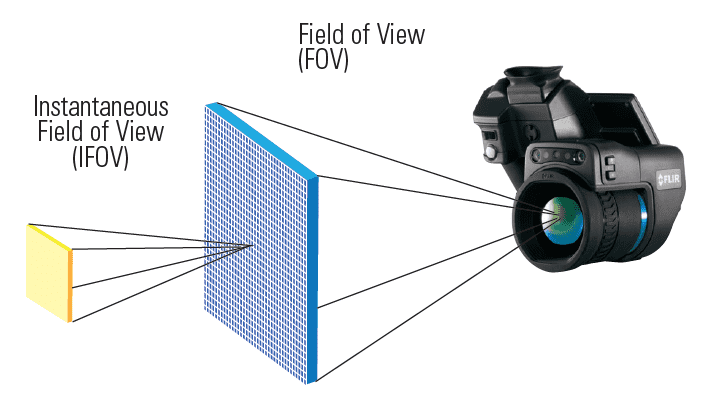
IFOV is an angular projection of just one of the detector's pixels in the IR image. The area each pixel can see depends on your target distance for a given lens.
You can calculate the IFOV using your camera’s FOV and resolution (check out our Spot Size Ratio Tech Note for details), or you can hop online, where FLIR has an FOV calculator for each of our cameras that will let you skip most of the math. To access the calculator, click on the FLIR camera series name to see a list of all the cameras in that series. Click on “FOV calc.” next to the correct camera, and quickly find the IFOV (in inches or mm) for any given distance (in feet or meters).
If we use the FOV calculator for the FLIR E8 and type in 10 ft (120 inches), we get an IFOV of 0.31 inches. This number is the measurable size of one single pixel (1 × 1). By plugging those numbers into the SSR formula:
SSR = Distance / Spot Size
we get a D:S ratio of 120:0.31. To put it in more simple terms, 0.31 is about 1/3 of an inch, so this calculation tells you that your camera can measure a 1/3-inch spot from 120 inches away.
Great, we’re done, right? Well, not quite. This single-pixel measurement is called “theoretical SSR.” While this may be considered the “true” SSR, it is misleading because it is not necessarily the most accurate.
Theoretical Spot Size Ratios - “True” But Not Accurate
Theoretical spot size ratio only gives you the temperature of a very small area within a single pixel, but a single pixel measurement may be inaccurate for various reasons:
- Thermal cameras can develop bad pixels
- Objects reflect: a scratch or solar reflection would cause a false positive and a false high reading
- The object that is hot – say a bolt head – might be close to the same width as a pixel, but pixels are square whereas a bolt head is hexagonal
- No optics are perfect: there are always some distortions in optical systems which impact measurements
For real life cases, you really want to get as many pixels as possible on your target for the greatest accuracy. One or two pixels may be enough to qualitatively determine that a temperature difference exists, but it may not be enough to provide an accurate representation of the average temperature of an area. We recommend making sure to cover the hot area where the spot value is requested with at least 3 × 3 pixels.
To calculate a SSR of 3 × 3 pixels, just multiply your IFOV by three, giving you 3 × 3 pixels instead of 1 × 1. This number is going to be more accurate.
If you multiply our previous IFOV (0.31 in) by 3, you get:
0.31 × 3 = 0.93 in
This gives you an SSR of 120:0.93, meaning you can measure nearly a one-inch sized spot from 120 inches away with accuracy.
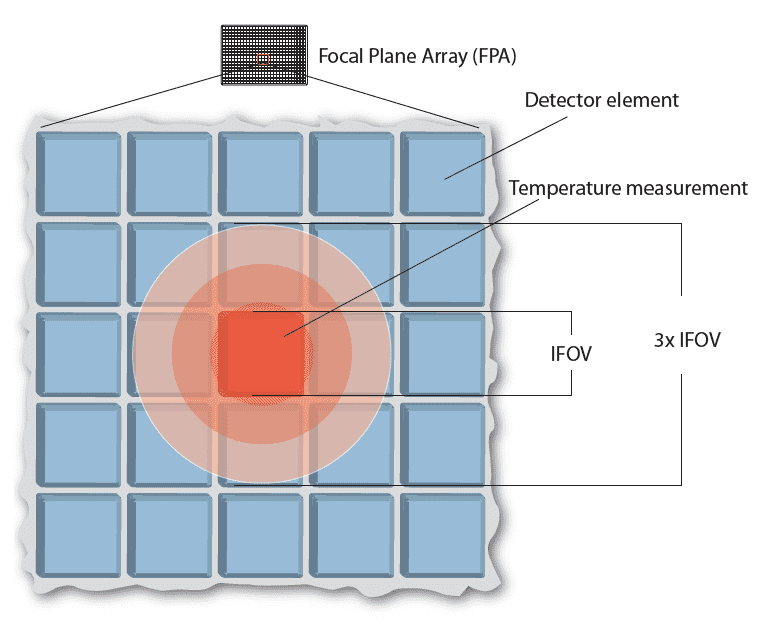
In the ideal situation the projected target should cover at least one pixel. To ensure accurate readings it is advisable to cover a wider area to account for the optical dispersion of the projection.
Ultimately, spot size ratio matters because it will help you understand whether your thermal camera is capable of accurately measuring temperature at the required distance. If you need to measure small targets from long distances, it will be crucial to know the spot size ratio of the camera and whether you are standing within accurate measurement range.
The higher the resolution your camera has, the more likely you are to get enough pixels on a target from farther away with accurate results. Digital zoom doesn’t improve accuracy, so higher resolution or narrow field of view is key here. If you are planning a thermography survey, think about whether you can safely get close enough to a target to get an accurate reading. At the end of the day, having no data might be better than drawing false conclusions based on inaccurate data.
